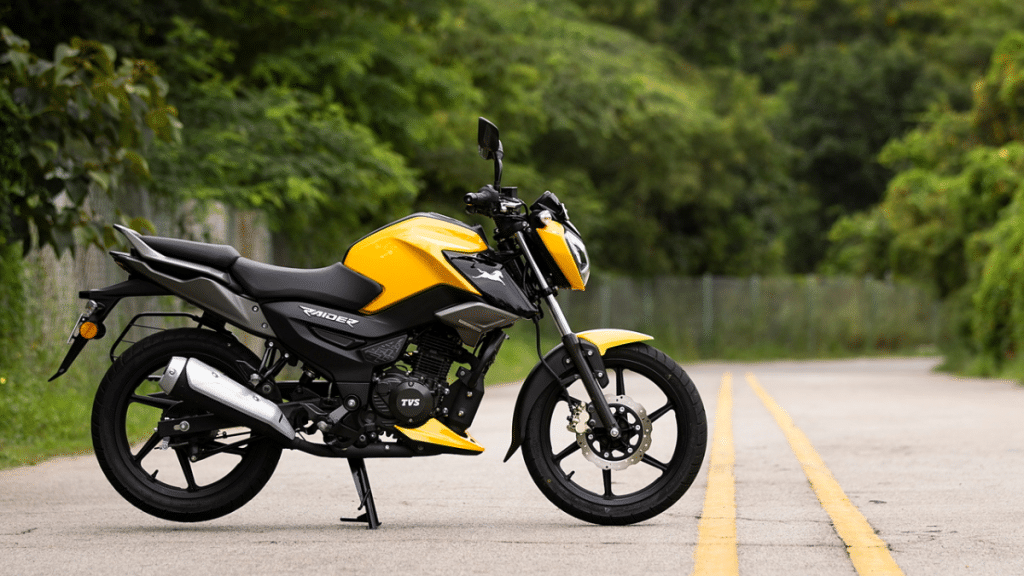Purchasing a bike through a loan with a minimal down payment offers immediate access to a new vehicle without depleting savings. However, it’s essential to weigh the benefits against the potential drawbacks.
What Is a Minimum Down Payment for a Bike Loan?
A minimum down payment refers to the upfront amount you pay when purchasing a bike on loan. Typically, this is a percentage of the bike’s on-road price. The remaining balance is financed through the loan. Lenders often require a down payment to mitigate their risk.
Pros of Minimum Down Payment Bike Loans
Opting for a minimal down payment reduces initial financial strain, enabling quicker access to your desired bike. This approach preserves savings for other essential expenses or investments. Here are the various pros:
1. Lower Initial Financial Burden
Opting for a minimal down payment reduces the immediate financial strain. This is particularly beneficial for individuals with limited savings but a steady income. By lowering the initial out-of-pocket expense, you can avoid dipping into emergency funds or depleting savings meant for other goals. This allows you to maintain financial stability while still making the purchase.
2. Quick Access to a New Bike
With a smaller upfront cost, you can acquire your desired bike sooner. This is ideal for those needing a vehicle promptly for commuting or personal use. Since the down payment is lower, the loan approval process might be faster, enabling you to get your bike quickly. It’s especially helpful if you’re in urgent need of transportation but cannot afford a large upfront payment.
3. Preserve Savings for Other Expenses
By minimising the down payment, you retain more of your savings. This allows you to allocate funds for other essential expenses or investments. Instead of committing a large sum upfront, you can use your savings to cover unforeseen costs, medical emergencies, or other financial goals. Additionally, you have the option to invest these funds in more lucrative opportunities.
4. Potential for Higher Loan Amount
A smaller down payment means you can finance a larger portion of the bike’s cost. This is advantageous if you’re interested in a higher-end model. Financing a larger amount gives you access to more expensive bikes, providing more options in terms of features and performance. If the bike’s cost is significantly higher than the down payment, you can upgrade your choice without stretching your budget too thin.
5. Flexible Loan Terms
Many lenders offer flexible repayment options, allowing you to choose EMI amounts and durations that suit your financial situation. This flexibility can ease the repayment process. With options to extend or shorten the loan tenure, you can adjust your monthly obligations based on your changing income or financial priorities.
Cons of Minimum Down Payment Bike Loans
While a minimum down payment reduces initial costs, it can lead to a higher loan amount, increasing interest and overall financial burden. It may also limit flexibility and result in long-term repayment challenges. Here are the various cons:
1. Higher Loan Amount and Interest
Financing a larger portion of the bike’s cost leads to a higher loan amount. Consequently, you’ll pay more in interest over the loan’s tenure. Since the loan balance is higher, your total cost of borrowing increases, meaning you may end up paying significantly more than the bike’s actual price in the long run.
2. Longer Repayment Period
To manage higher EMIs, you might opt for a longer loan tenure. While this reduces monthly payments, it increases the total interest paid. Although the EMI burden is lower in the short term, the extended repayment period means you’ll end up paying more in interest over time, impacting your long-term financial planning.
3. Potential for Negative Equity
If the bike’s value depreciates faster than the loan balance reduces, you may owe more than the bike’s worth. This situation is known as negative equity. In such cases, if you wish to sell or trade the bike before the loan is fully paid off, you may face financial losses as the bike’s resale value won’t cover the remaining loan balance.
4. Impact on Credit Score
Missing EMI payments or defaulting on the loan can adversely affect your credit score. A lower credit score can hinder future borrowing opportunities. It can make it more challenging to qualify for other loans, such as home or personal loans, and may lead to higher interest rates on any future credit you may need.
5. Limited Ownership Flexibility
Until the loan is fully repaid, the lender holds a lien on the bike. This restricts your ability to sell or modify the bike without lender approval. Additionally, you may be unable to take the bike to certain locations or use it for specific purposes if the lender imposes restrictions on its usage until the loan is cleared.
Using a Bike EMI Calculator Online
Before committing to a loan, it’s prudent to calculate potential EMIs. A bike EMI calculator online can assist in determining affordable monthly payments based on loan amount, interest rate, and tenure.
Utilising such tools helps in budgeting and ensures that the loan aligns with your financial capabilities. It’s advisable to input accurate details to obtain precise calculations.
Conclusion
Opting for a minimum down payment bike loan offers immediate access to a new bike with reduced upfront costs. However, it’s crucial to consider the long-term financial implications, including higher interest payments and potential impacts on credit. Utilising a bike EMI calculator online can aid in making an informed decision that aligns with your financial goals.
